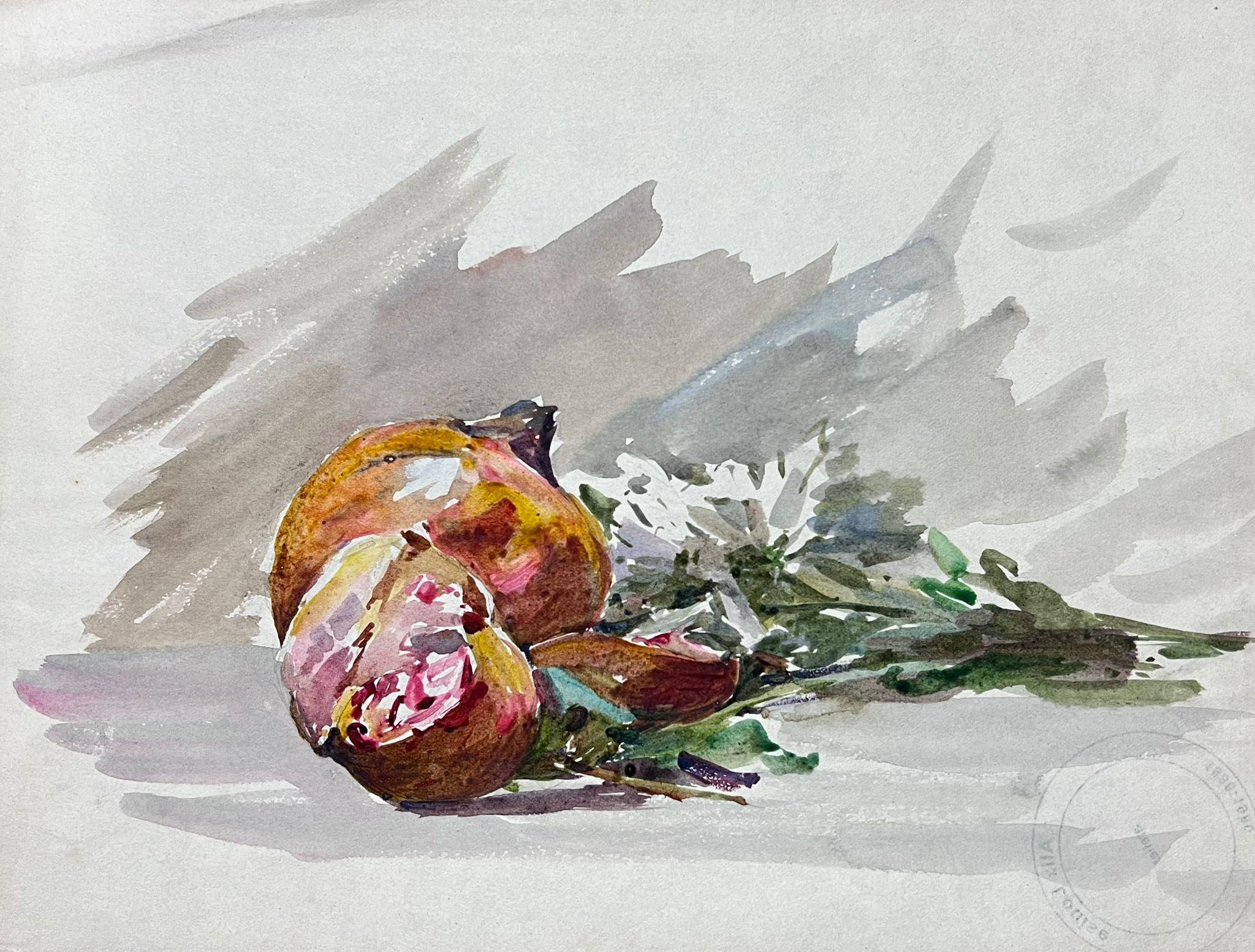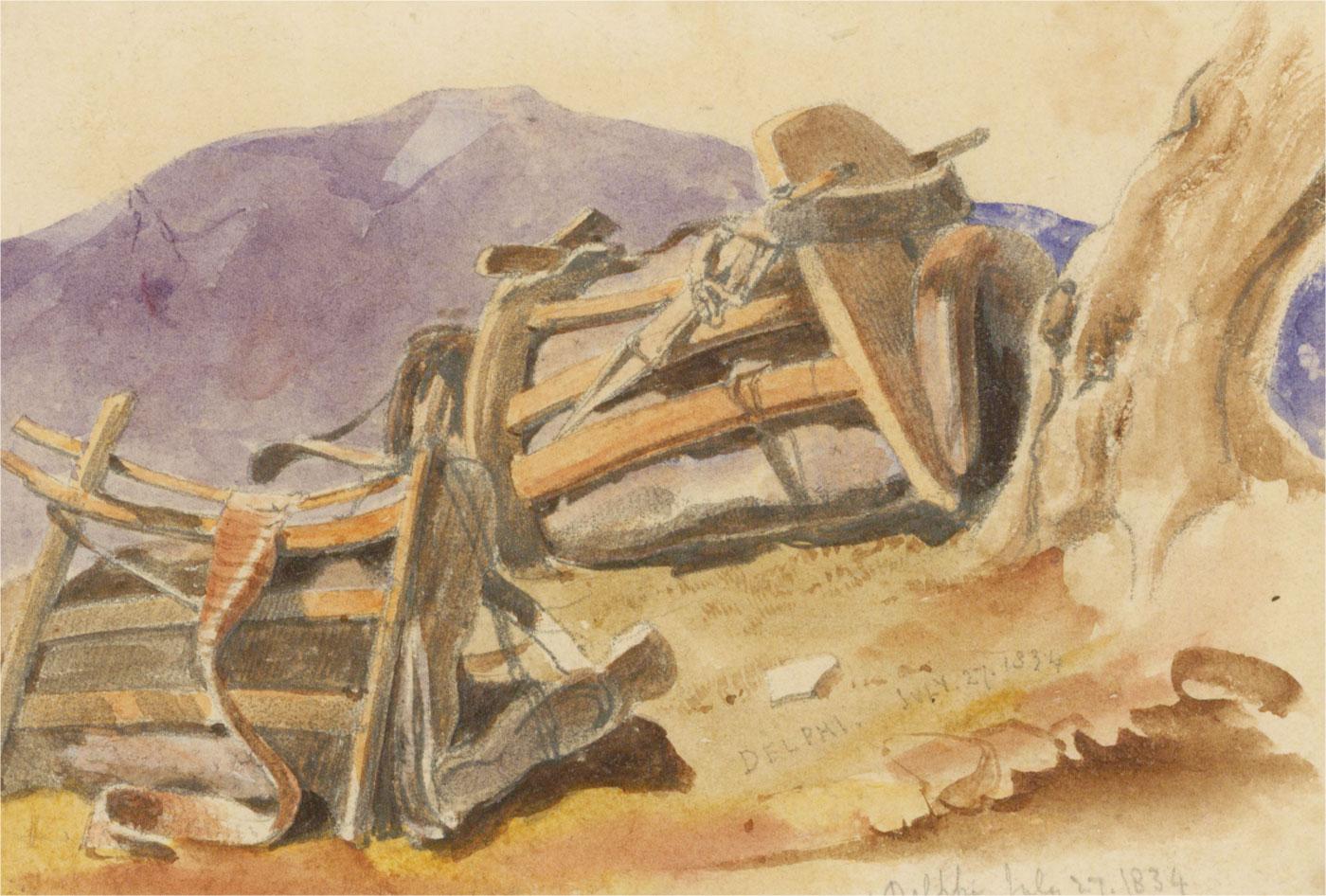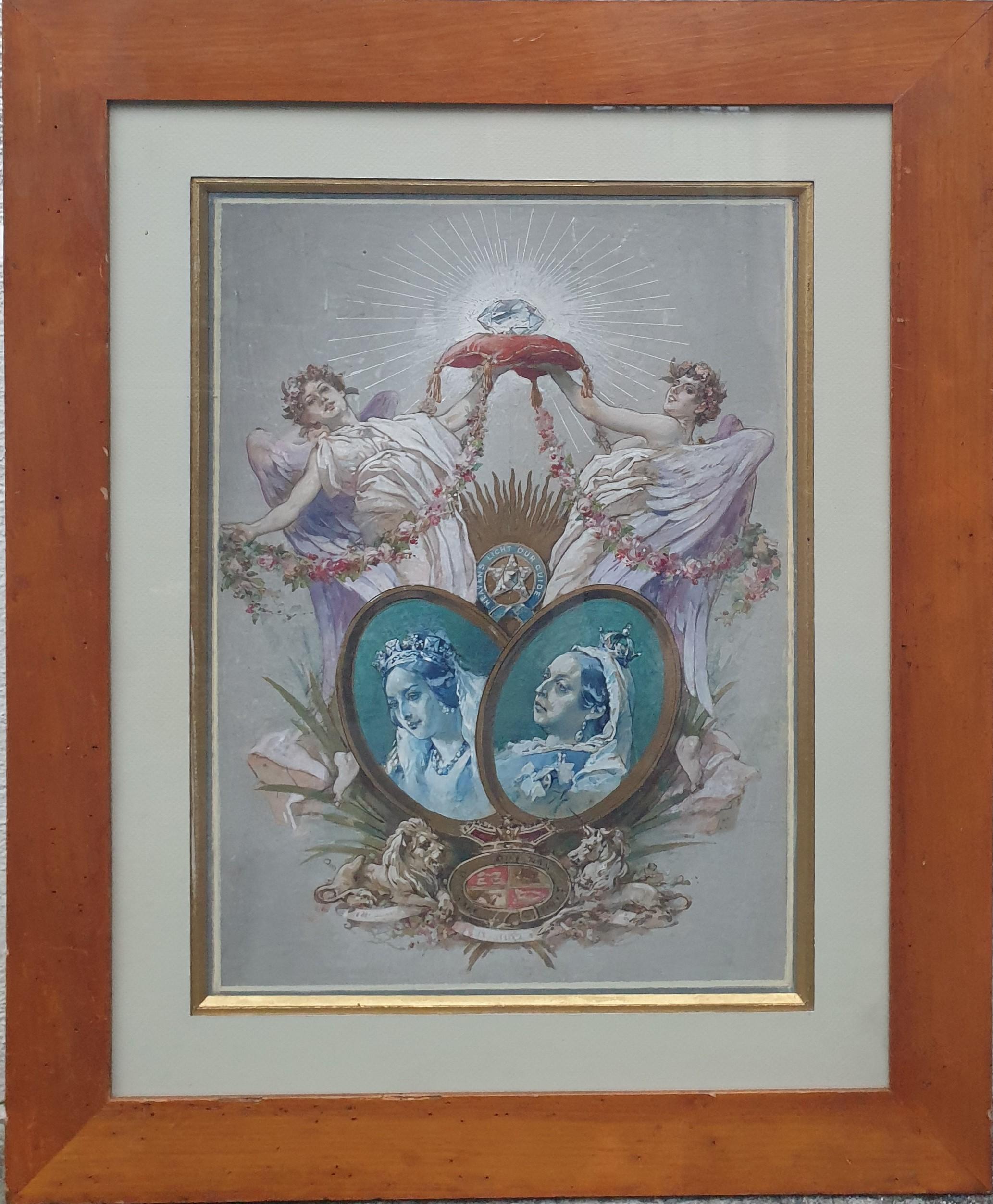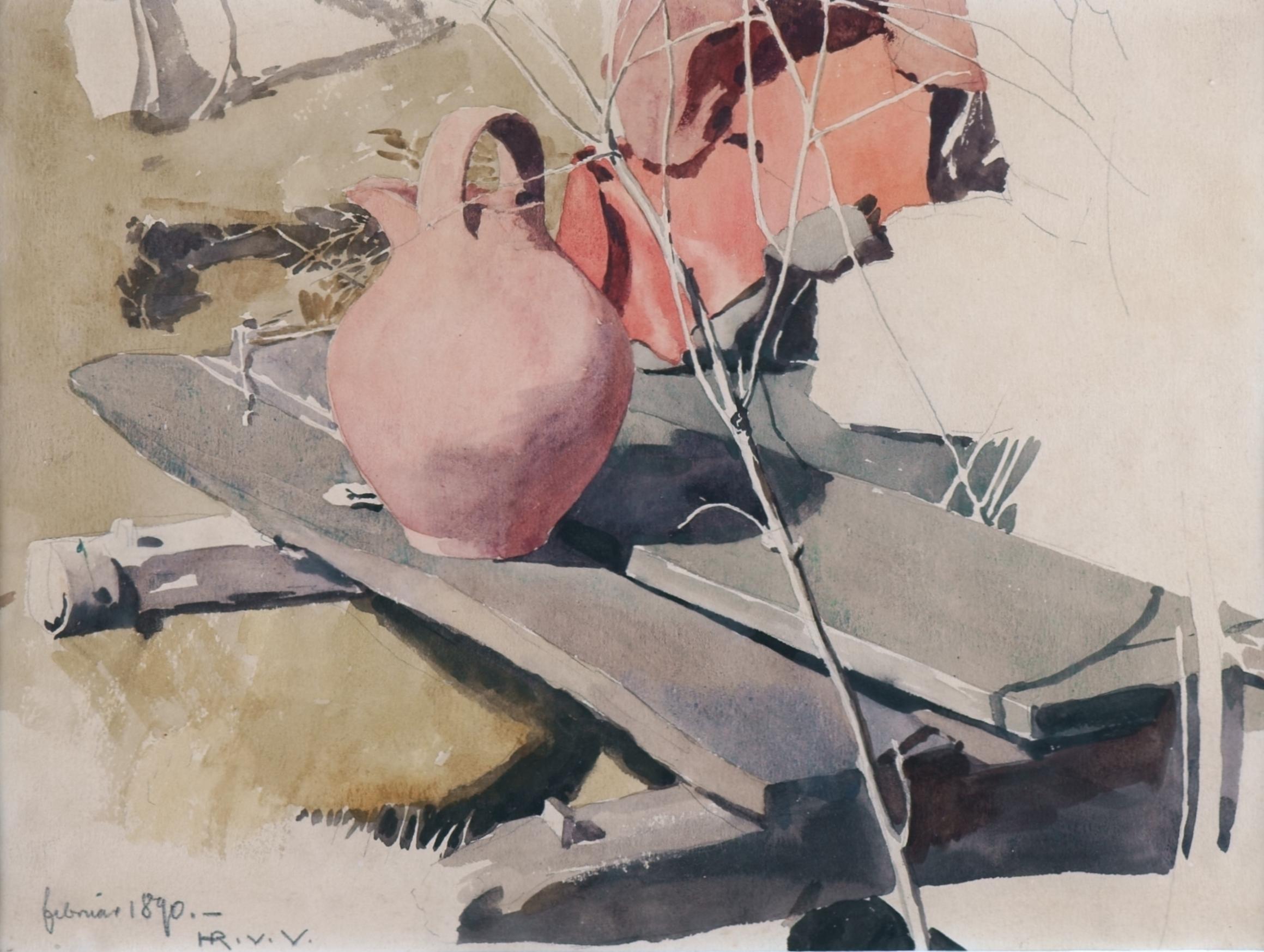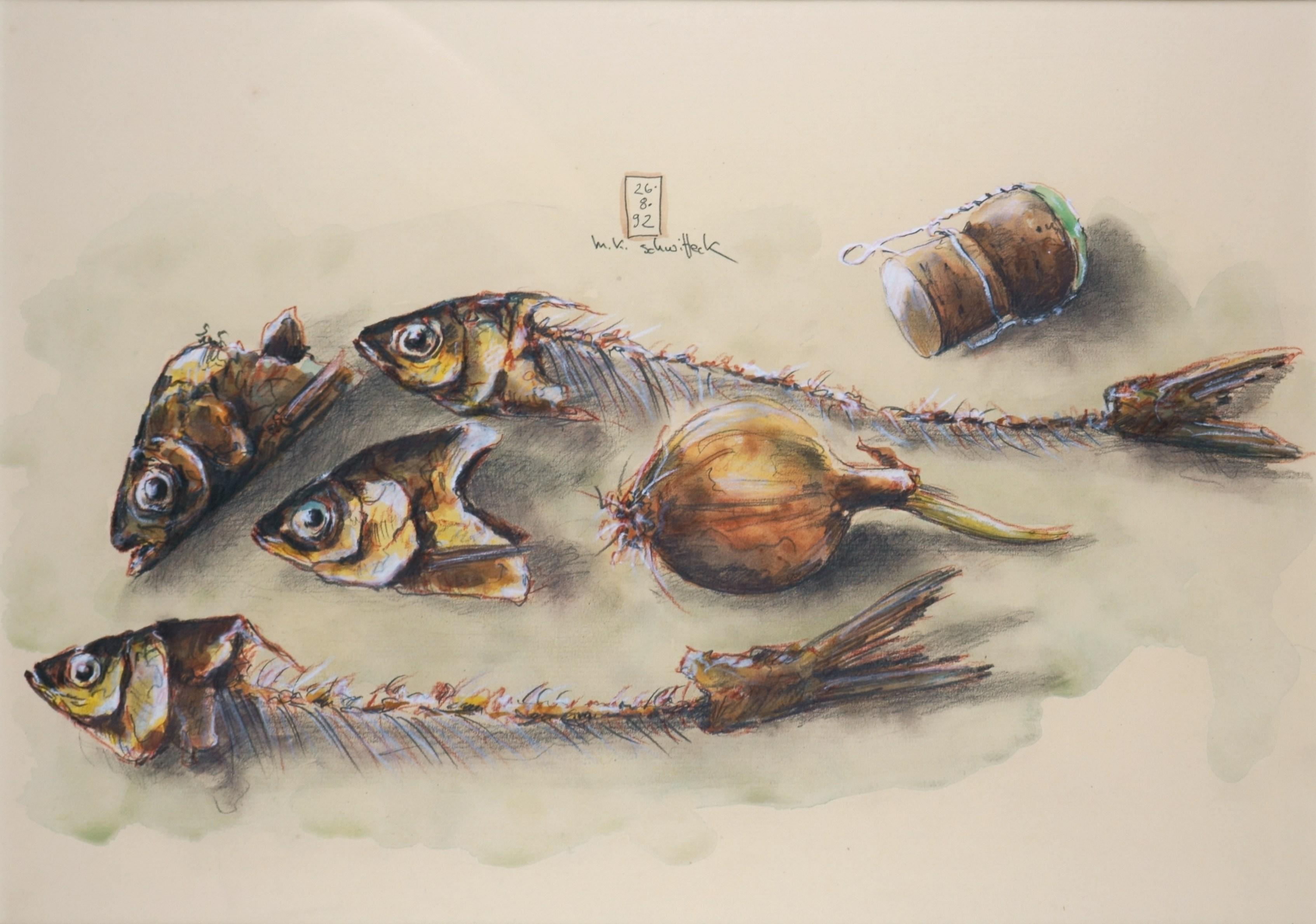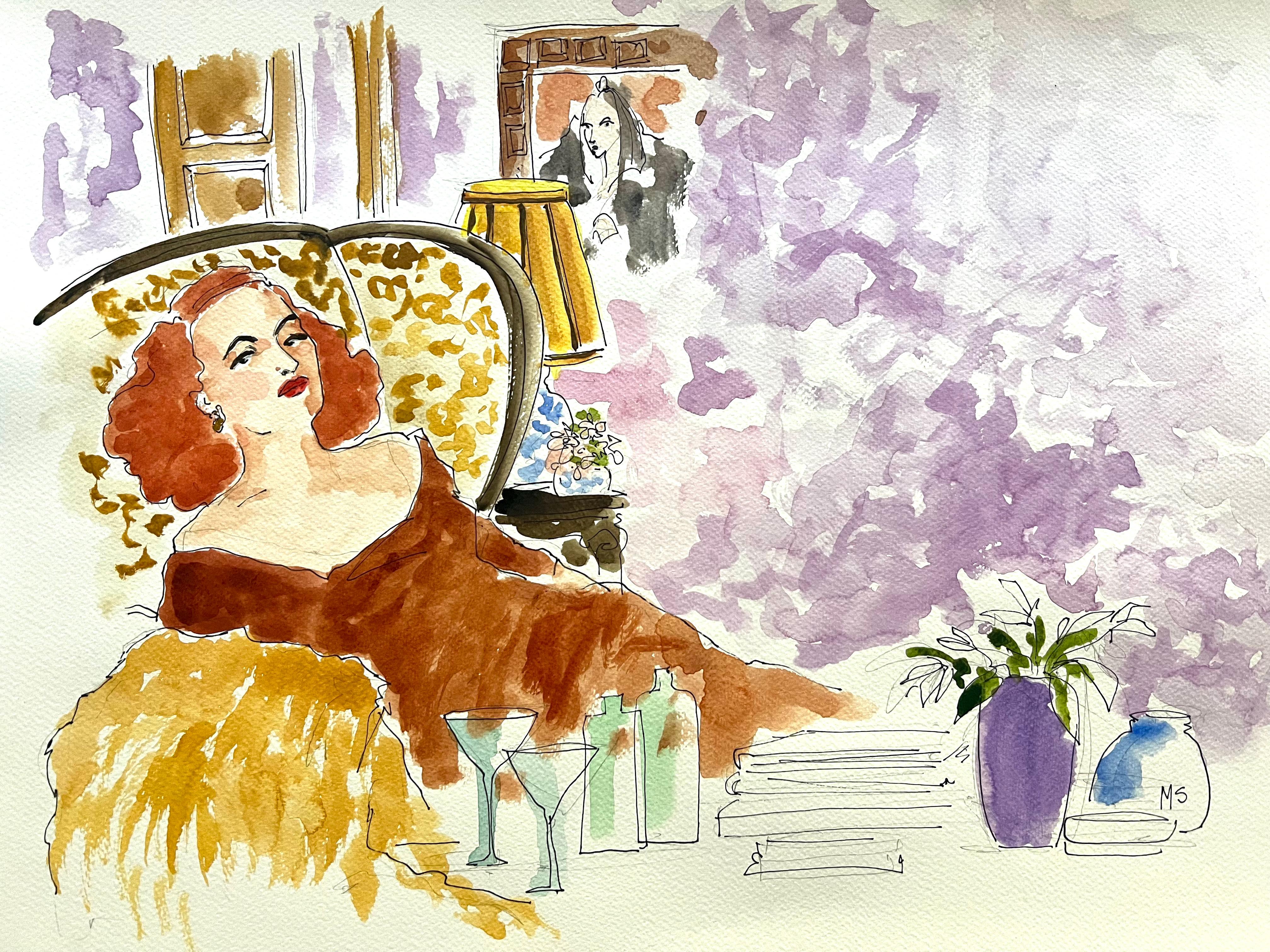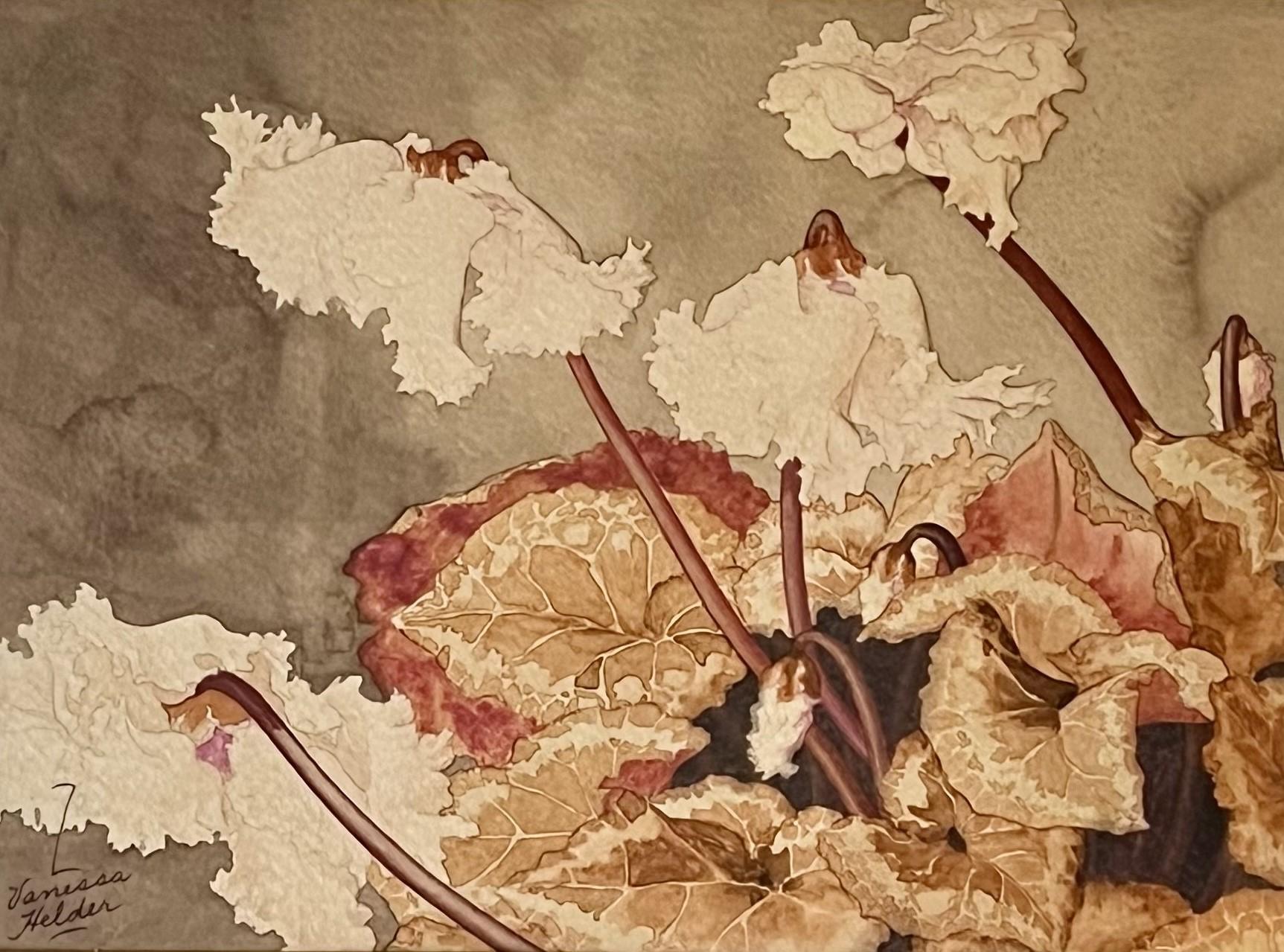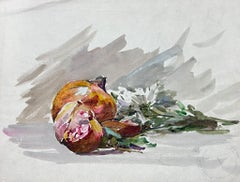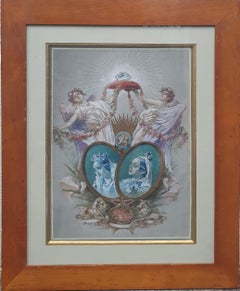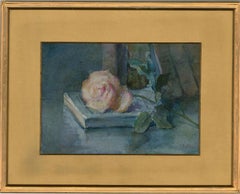
Emily Maria Scott (1832-1915) - Late 19th Century Watercolour, A Single Rose
Want more images or videos?
Request additional images or videos from the seller
1 of 8
Emily Maria ScottEmily Maria Scott (1832-1915) - Late 19th Century Watercolour, A Single RoseUnknown
Unknown
About the Item
- Creator:Emily Maria Scott
- Creation Year:Unknown
- Dimensions:Height: 11.7 in (29.7 cm)Width: 14.41 in (36.6 cm)
- Medium:
- Period:
- Condition:The condition is typical for a picture of this age including some discolouration. Minor marks to the mount and some scuffs to the frame.
- Gallery Location:Corsham, GB
- Reference Number:Seller: qu3091stDibs: LU881310232272
About the Seller
4.9
Platinum Seller
These expertly vetted sellers are 1stDibs' most experienced sellers and are rated highest by our customers.
Established in 2010
1stDibs seller since 2018
860 sales on 1stDibs
Typical response time: 5 hours
More From This SellerView All
- Mid 19th Century Watercolour - White PoppyLocated in Corsham, GBThe condition is typical for a picture of this age including some minor discolouration. Very minor marks to the frame.Category
Mid-19th Century Still-life Drawings and Watercolors
MaterialsWatercolor
- Framed 19th Century Watercolour - A Floral PosyLocated in Corsham, GBA particularly fine botanical study from the Victorian period. The picture shows a beautiful posy of English summer flowers, some in bud some in bloom. Presented in an antique bird's...Category
19th Century Still-life Drawings and Watercolors
MaterialsWatercolor
- Ann Mumford - Framed Contemporary Watercolour, Eglantine RosesLocated in Corsham, GBAn original watercolour by Ann Mumford. Well-presented in a double card mount and black reeded frame. Signed by the artist to the lower right. Labelled verso. On paper.Category
21st Century and Contemporary Still-life Drawings and Watercolors
MaterialsWatercolor
- William Cruikshank (1848-1922) - Watercolour, Blossom and Dunnock EggsBy William CruikshankLocated in Corsham, GBA fine watercolour study depicting a nest of hedge sparrow eggs with cherry blossom . The artist uses an expert hand to capture the fine details of the intricate birds nest and delic...Category
19th Century Still-life Drawings and Watercolors
MaterialsWatercolor
- Hilda Nicholson Towers (1896-1978) - 1914 Watercolour, Packet Of WhitebaitLocated in Corsham, GBA charming early 20th Century still life showing a brown packet, with whitebait spilling out, their shiny scales catching the light. The artist has signed and dated to the lower left...Category
Early 20th Century Still-life Drawings and Watercolors
MaterialsWatercolor
- H. Hackotoun - 1885 Watercolour, Pansy and SeashellLocated in Corsham, GBA charming 19th Century still life study depicting a seashell, dog roses and a pansy carefully placed before a rock. The artist captures the delicate flowers and their textures in gr...Category
Late 19th Century Still-life Drawings and Watercolors
MaterialsWatercolor
You May Also Like
- French Impressionist Watercolour Still Life Pomegranate and Daisy Bunch PaintingLocated in Cirencester, GloucestershireVintage French Oil Painting by Louise Alix (French, 1888-1980) *see notes below provenance stamp to the back watercolour painting on artist paper, unframed measures: 8.25 inches hig...Category
Mid-20th Century Impressionist Still-life Drawings and Watercolors
MaterialsWatercolor
- Still life. Watercolour and inkLocated in Llanbrynmair, GB'Still life’ By George William Bissill Medium - Watercolour and ink Signed - Yes Size - 240mm x 195mm Date - Circa 1920 Condition - very good. 9 out of 10. Colour of picture may not be accurate when viewed on a monitor. George William Bissill 1896 – 1973 was a British miner, painter, and furniture designer. Bissill's paintings are held in a number of important public collections, including the Tate Gallery, National Museum of Northern Ireland and the Manchester Art Gallery. Bissill was known for his landscapes and figurative paintings in oil, watercolour and woodcuts. George Bissill...Category
1920s Abstract Expressionist Still-life Drawings and Watercolors
MaterialsInk, Watercolor
- Watercolor British school 19thcentury Diamond jubilee Portrait Queen VictoriaLocated in PARIS, FREnglish school from the end of the 19th century Watercolor and gouache 38 x 28 cm (60x49 cm with the frame) Very beautiful late 19th century frame in pitch pine wood. Very good condition This watercolor was made for the diamond "jubilee" in 1897 of Queen Victoria, crowned on the 20 June 1837 Queen of the United Kingdom of Great Britain and Ireland. She was also Queen of Canada from 1867 and Empress of India from 1876. This watercolor represents two portraits of the Queen, one in 1837 and the other in 1897, as well as a beautiful diamond which reminds of the famous Indian diamond the Koh-i-Nor which was presented in 1850 to Queen Victoria, for the 250th anniversary of the English East India Company, and cut and mounted on a tiara with two thousand other diamonds in 1852. We also recognize in this watercolor the insignia of the Order of the Star of India...Category
Late 19th Century English School Still-life Drawings and Watercolors
MaterialsWatercolor
- Clay jug on a bench - The essence of the clay jar revealed by the sunlight -By Hans Richard von VolkmannLocated in Berlin, DEHans Richard von Volkmann (1860 Halle (Saale) - 1927 ibid.), Clay jug on a bench. Pencil and Watercolour on paper. 20 x 26,7 cm (visible size), 37 x 45 cm (frame), dated and monogrammed lower left "Februar 1890 - HR. V. V." - Minimally tanned. Framed behind glass in a passepartout. About the artwork Using the technique of his early youth - pencil and watercolour - Hans Richard von Volkmann depicts a still life. However, this is not a conventional indoor still life, but an open-air depiction, painted outdoors and not in the studio. It is therefore an open-air painting, characteristic of von Volkmann's oeuvre, which could have been painted in the Willingshausen colony of painters, where open-air painting was programmatically practised there and the artist stayed there that year. And indeed, this painting is a manifesto of open-air painting. Von Volkmann demonstrates that leaving the studio for the light of nature leads to an entirely new quality of art. To prove this, he uses the genre of still life, which can be described as the studio subject par excellence. Moreover, light plays an essential role in the classical still life. It is the real protagonist of the still life. And it is precisely this moment, essential to the still life, that von Volkmann exploits to demonstrate the potential of plein-air painting: He presents the objects as they appear in the sunlight. The date of February and the bare branches in the foreground make it clear that this is a clear winter day in bright sunlight. The delicate plant in the foreground casts a clearly defined shadow, as does the jug. However, the shadow is most pronounced on the jug itself: The underside of the handle appears almost black, making the top, and therefore the jug itself, shine all the more brightly. The shining of the objects in the sunlight is also visible on the bench. As complementary phenomena to the shadow zones, light edges can be seen on the boards of the seats and the upper foot of the bench shines entirely in the light. To achieve this intensity of light, von Volkmann activated the bright white of the painting ground. By depicting the objects in glistening sunlight, von Volkmann demonstrates that this quality of light is only to be found outdoors. And this light leads to a new way of looking at the objects themselves. The jug on the bench seems like an accidental arrangement, as if the artist had stumbled upon this unintentional still life and captured it with fascination. And in this fascination there is a moment of realisation that refers to the objects themselves. It is only when they shine brightly in the sunlight that their true nature is revealed. In this way, sunlight allows the objects to come into their own, so to speak. Sunlight, which is not present in the studio, gives the still life an entirely new dimension of reality, which is also reflected in the colours interwoven by the sunlight: The bench and the jug stand in a harmonious grey-pink contrast to the green of the implied meadow. The emphasis on the jug as the central subject of the picture also implies that the watercolour has not been completed. This non finito inscribes a processuality into the picture, making it clear that something processual has been depicted, the temporality of which has been made artistically permanent. This is why von Volkmann signed the painting and dated it to the month. About the Artist Von Volkmann made his first artistic attempts at the age of 14. He painted many watercolours of his home town of Halle. This laid the foundation for his later outdoor painting. In 1880 his autodidactic beginnings were professionalised with his admission to the Düsseldorf Art Academy. There he studied under Hugo Crola, Heinrich Lauenstein, Johann Peter Theodor Janssen and Eduard von Gebhardt until 1888. Von Volkmann then moved to the Karlsruhe Academy, where he was Gustav Schönleber's master pupil until 1892. In 1883 he came for the first time to Willingshausen, Germany's oldest painters' colony, at the suggestion of his student friend Adolf Lins...Category
1890s Naturalistic Still-life Drawings and Watercolors
MaterialsWatercolor
- Plant Impression in Locarno - Floral Crescendo -Located in Berlin, DEAlexander Frenz (1861 Rheydt - 1941 Düsseldorf). Plant impression in Locarno. Gouache and watercolour. 35 x 23,5 cm (visible size), 49,5 x 38,5 cm (fra...Category
1890s Impressionist Landscape Drawings and Watercolors
MaterialsWatercolor
$806 Sale Price20% Off - Still life with fish bones, pencil and pencil sharpenerLocated in Berlin, DEManfred K. Schwitteck (*1948), Still life with fish bones, pencil and pencil sharpener, 1992. watercolor over pencil on handmade paper, 31.5 x 45 cm (visible size), 47 x 61 cm (frame...Category
1990s Surrealist Still-life Drawings and Watercolors
MaterialsWatercolor, Pencil
$420 Sale Price20% Off
Recently Viewed
View AllMore Ways To Browse
Book Sign
Antique Pink Roses
American Still Life 19th Century
Roses Painting 19th
19th Century Painting Roses
Antique Book Rest Antiques
Antique Book Rest
American 19th Century Watercolors
Painting Signed Scott
Scotts Antique
Emily Brown
Antique Rose Drawing
Single Rose Painting
Antique Still-life Drawings and Watercolors
19th Century Still Life In Gilt Frame
Antique Book Card
Emily Scott
Botanical Watercolor Flower
